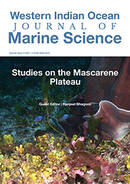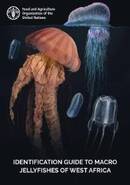Technical documents

In 2018, the state-of-the-art research vessel Dr. Fridtjof Nansen of the EAF-Nansen Programme conducted a survey of the waters off the coast of northern Mozambique, using its advanced technology and equipment to collect data and information on the resources in the area. The expedition provided a great opportunity to bring this ocean area to the attention of scientists and ocean enthusiasts, both to increase knowledge of its beauty and raise awareness of the challenges it faces. Using the findings from the research survey, this book will take you on a journey through the marine landscape. You will learn about the diversity of its unique and beautiful fauna, as well as signs of human impacts on the habitats and species of the Cabo Delgado province.
Em 2018, o navio de investigação de última geração Dr. Fridtjof Nansen do Programa EAF-Nansen realizou um levantamento científico das águas ao largo da costa Norte de Moçambique, usando a sua tecnologia e equipamentos avançados para recolher dados e informações sobre os recursos na área. A expedição proporcionou uma grande oportunidade para chamar a atenção de cientistas e entusiastas do oceano para esta região oceânica, tanto para aumentar o conhecimento sobre a sua beleza quanto para sensibilizar para os desafios que esta enfrenta. Usando os resultados obtidos durante o cruzeiro de investigação, este livro irá levá-lo numa uma viagem pela paisagem marinha. Irá aprender sobre a diversidade da sua fauna única e bela, assim como sobre os sinais dos impactos humanos nos habitats e espécies da província de Cabo Delgado.

The EAF-Nansen Programme has supported partner countries in their efforts to implement sustainable fisheries since 1975. More recently, work besides fisheries has also been dedicated to addressing human-related pressures on marine ecosystems such as oil and gas exploitation activities, recognizing that these may also represent a major threat to fisheries and ecosystem sustainability. Increasing oil and gas exploitation activities in the absence of adequate monitoring programs represent a major source of concern. In this context, the EAF-Nansen Programme, with the R/V Dr. Fridtjof Nansen, supports partner countries with setting baselines as the basis for monitoring systems in support of environmental management in areas where oil and gas activities are being developed. Following up upon request by the Governments of Mauritania and Senegal, a survey was organized between 22 October and 16 November 2021 with the main objective of developing a baseline for future monitoring of possible impacts of oil and gas activities at sea in the region between 17º and 15º south. The sampling scheme was planned to be in line with the Guidelines for Monitoring the Environmental Impact of Offshore Oil and Gas Activities by the OSPAR Convention for the Protection of the Marine Environment of the North-East Atlantic. Preliminary results are already available from bottom habitat mapping and are presented in this policy brief because of their relevance to the ongoing developments in gas exploitation in Mauritania and in Senegal.


This identification guide includes 552 species of mesopelagic fishes (i.e. those fishes residing primarily between 200-1000 m depth during daytime) that are known to occur in the central and south east Atlantic Ocean. Fully illustrated dichotomous keys to all taxa are provided. Species are treated in detail, with accounts including the scientific name, FAO common name in English (where available), other useful characters, size, a distribution map, and one or more illustrations. To facilitate even further the identification of the taxa, captions and arrows are added to help users quickly locate their key morphological features. The guide is intended for both specialists, and nonspecialists who have a working knowledge of ichthyology.

This identification guide includes 56 species of macro (> 5 cm in diameter) jellyfishes (cnidarians, ctenophores, and thaliaceans) that are known to occur off the coast of West Africa. It provides fully illustrated dichotomous keys to all taxa, an illustrated glossary of technical terms for each main group, and species accounts including the scientific name, diagnostic features, colour, size, ecology, stinging, geographical distribution, and one or more illustrations. The guide is intended for both specialists, and non-specialists who have a working knowledge of biology.
